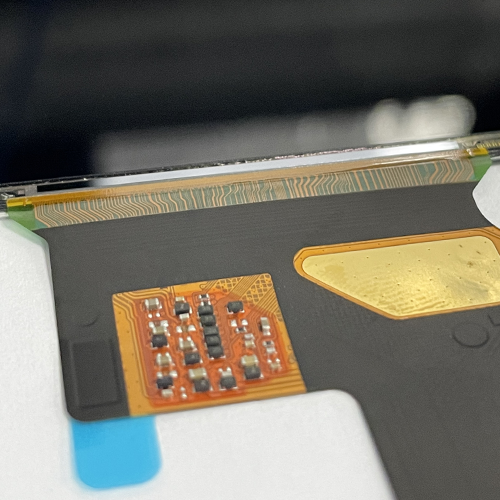

-
SKUTD4377
New Full High Definition 144 Hz Touch and Display Driver Integration for Next-Generation Smartphones
OMNIVISION Touch & Display Solution’s TD4377 touch and display driver integration (TDDI) leverages OMNIVISION’s proven image algorithm, high quality and stable supply chain to help tier-one LTPS panel manufacturers speed time to market. It supports higher performance in display and touch with much lower power consumption.
The TD4377 enables 1080 pixel full high definition (FHD) resolution and up to 144 Hz display frame rate for smartphones. It also provides a 2x touch report rate in LCD TDDI solutions.
Upgraded from the TD4375, which was in mass production in millions of Tier1 OEM phones, the TD4377 will be held to the same high quality standards for customers.
Touch Features
Multi-touch coordinate sensing without ghost points
– Voltage correction circuits enhance the sensitivity (supporting automatic calibration)
RISC CPU optimized for capacitive sensing and other human interaction
Supports up to 18×36 electrodes to provide the highest possible accuracy
– Analog front ends (AFEs) support up to 648 receiver pads
Supports I2C and SPI with OMNIVISION TouchComm protocol for communication with the host
Proprietary intelligent algorithms, run locally on the CPU facilitate the removal of mechanical buttons and switches, which increases reliability and reduces footprint and component cost
Low power sensing modes enable wake-up gesture functionality
Face-detect proximity capability reduces cost by eliminating the need for other proximity sensing components
Display synchronization and increased voltage capability enable improved performance over discrete touch implementations
Programmable sensing speed of 50 kHz to 500 kHz to minimize noise interference
Includes support to control segmented VCOM in-cell touch scanning circuits and enable ultra-thin, low-cost integrated sensing schemes
High signal-to-noise ratio (SNR) touch AFE improves touch performance
144/120/90/60 Hz long H-blank or V-blank sensing
Low power wake-up gesture (LPWUG)
Display Features
16.77M colors (24 bpp data format) single chip driver for a 1024-grayscale TFT with a resolution of 1080 RGB x 2520-dot graphics (with power supply circuits and supporting low temperature poly-silicon (LTPS) panel)
4-lane/1-port MIPI DSI-2 D option interface for high-speed and low power transmission in both directions with low EMI noise (DSI-2 1.0, D-PHY1.3, DCS 1.2)
3-lane/1-port MIPI DSI-2 C option interface for more high-speed and low power transmission in both directions with fewer data lane number and low noise (DSI-2 1.0, C-PHY1.3, DCS 1.2)
Digital pixel processing
– Digital GAMMA for RGB separate gamma correction function
– Content adaptive backlight control (CABC)
– Color enhancement (CE) with color space management
– Sunlight Readability Enhancement function (SRE)
– Outline sharpness function
– Local area Auto Contrast Optimization function (LCO)
– Paper mode
Low-power consumption architecture (allowing direct input of the interface I/O power supply)
– Input power supply voltage: Interface and logic power supply: IOVCC Analog power supply: VSP, VSN MIPI D-PHY power supply: DPHYVCC MIPI C-PHY power supply: DPHYVCC
Internal liquid crystal drive power supply circuit
– Source driver and VCOM: VSP-AGND and VSN-AGND
– DC power supply for VCOM drive: VCI-VCL
– Interface to the panel: VGH-AGND and VGL-AGND
– Interface to the panel: SOUT1-48
– Liquid crystal panel drive circuits: 1080 source signal lines (three multiplexers)
– One-chip solution for a chip-on-film (COF) module
– Internal NVM: VCOM can be rewritten up to eight times
– Dummy pins are opened
– Chip substrate: Connected to the VSUB, the negative voltage of the chip. Put the isolation tape between the ASIC and the LCM bezel to prevent the substrate from contacting the inappropriate side
-
SpecTD4377
-
Use CaseSmartdevice LCD Display with Touch, Smartphone LCD Display with Touch
-
Frame Rate144 Hz
-
InterfaceMIPI DSI2 C/D
-
PackageCOG
-
Panel TypeLTPS
-
Part StatusMP
-
RAMRAM
-
Resolution1080 x 2520
